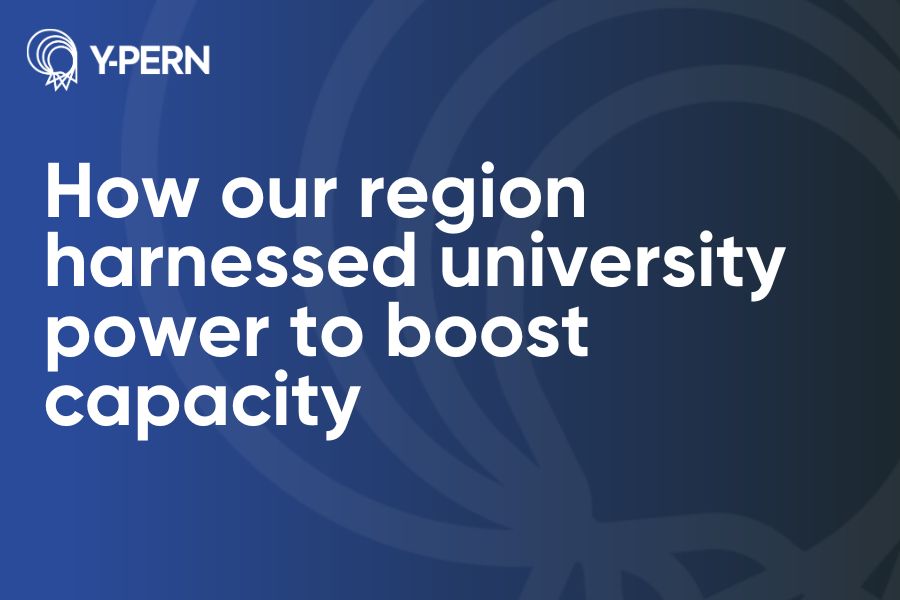Written by Y-PERN Policy Fellow Pratichi Chatterjee
Housing is the bedrock of a good life and is recognised as part of the right to an adequate standard of living, in the Universal Declaration of Human Rights. Access to decent and stable housing, however, is far from reality for many people. New refugees are among those groups in the UK who face acute challenges in securing good accommodation following a successful asylum claim.
Rough Sleeping among those who have left Home Office asylum accommodation spiked in December 2023. This followed the former Conservative administration’s efforts to speed up decision-making on asylum claims and reduce the ‘move-on’ period – the time new refugees have to leave asylum accommodation and find their own housing following a positive decision.i These changes saw more people exiting the asylum system, with some having only 7 days to find housing in a context unfamiliar to them.
Why are new refugees at heightened risk of homelessness?
Homelessness and housing precarity among new refugees, however, is not only the result of recent decisions. Rather, the challenges reflect systemic problems, with research and campaigners claiming that the UK’s asylum and immigration policies which its emphasis on deterrence, drive destitution and create challenges for migrants, in general, and refugees, in particular, when they try to find housing. Multiple factors contribute to this reality.
There has been a near complete ban on employment for people seeking asylum since 2002, reflecting policy aims to deter people from coming to the UK for economic purposes by ‘abusing’ the asylum system. But this decision has negatively impacted the financial independence of people seeking asylum and deprived them of the benefits of work. Down-stream this presents as increased risk of homelessness following the grant of an asylum claim. Data analysed by the Migration Observatory shows that two thirds of decisions on an asylum claim reached in 2024, had taken a year or more, and 50% of initial decisions had taken between 1 – 1.5 years, indicating that most people will have spent over a year without formal employment whilst awaiting a decision on their claim. People who are refused can appeal the decision or reapply, extending the time spent in the asylum system, barred from employment. Data suggests that this time in the system will likely be lengthened for many, as refusals are on the rise, with 2024 seeing a 40% increase in refusals compared with the previous year.
The asylum process can be isolating and destabilising, a direct consequence of policies designed to indirectly deter people arriving in the UK by restricting social and welfare support. Where people are housed in remote under-served locations, as seen in the case of many contingency hotels, access to services like legal aid, healthcare, education and community support is challenging. Developing vital language skills, for those who need it, is also restricted during this time, with English language teaching not funded for the first 6 months of waiting on a decision, and subsidies of 50% of course costs covered afterwards. Compounding the situation is the disruption to services and social relations, with many people being moved, sometimes multiple times, during the asylum process.
The ban on work and uneven access to services and support take away from people’s chances to build a stable life after their claim is granted. This is acutely seen in the ‘move-on’ period, when newly recognised refugees, previously in receipt of government support, have 56 days to vacate their accommodation. While the time frame is an improvement on the previous 28-day notice period, it is nonetheless a short time to ground oneself in a new life, find employment, access housing and apply for welfare in administrative systems that are unfamiliar. The experience can be profoundly disorientating.
Effective communication across multiple institutions – Home Office contractors managing asylum accommodation, local authorities and integration services – is critical to supporting people at the ‘move-on’ juncture. But third sector professionals and people with refugee status who spoke with us, during our work, claimed that a fragmented approach, poor communication and language barriers resulted in some people not knowing about the statutory homelessness support or universal credit provision that they are eligible for. Exacerbating the difficulties is the limited access to legal aid. Over half of legal aid providers were lost between 2005 and 2018 leaving people to navigate homelessness and welfare systems without the input of formal expertise.
Where people are able to access welfare support the benefits are limited, as many will be young, for whom the housing element of universal credit is restricted to the shared accommodation rate. For major cities across Yorkshire and Humber indicative estimates place the shared housing allowance rate at between £70 to £96 per week. This cohort of single people under 35 are also unlikely to be classed as ‘priority need’ under statutory homelessness provision, meaning that local authorities have no duty to offer them accommodation, although other support like discretionary housing payments may be available. While the situation is shared by others in the UK who face homelessness, new refugees are acutely impacted, because they are more likely to be new to the country and may not have the social support systems that can come to their aid in this time. Furthermore, recent research suggests that some landlords are reticent to rent to refugees or migrants because of fines imposed by ‘Right to Rent’ legislation.

How does this sit with preventing homelessness?
Statutory obligation on local authorities introduced in 2018 under The Homelessness Reduction Act were intended to place prevention at the centre of efforts to tackle homelessness, including by enabling local authorities, public services and the third sector to better collaborate. In West Yorkshire, all local authority housing strategies/plans reflect this focus on prevention, by prioritising issues like successful homelessness prevention, reducing homelessness and rough sleeping, and early intervention. The West Yorkshire Combined Authority’s Housing Strategy similarly identifies increased support for local authorities to tackle homelessness as an important outcome for the region.
The current organisation of the asylum system is out of step with these ambitions to prevent homelessness expressed at national, regional and local government level. In West Yorkshire itself, between 2022/2023 and 2023/2024 local authorities saw a 73% increase in the number of people to whom they owed a homelessness ‘prevention duty’ to who listed leaving asylum accommodation as the reason for the loss of their housing.
What can be done?
Organisations and researchers working in the homelessness and migration sectors have made several recommendations to reform the asylum system and related support. Some of their recommendations include:
- Delivering adequate, tailored support that is embedded within local infrastructureii, including for adult education and legal advice for people seeking asylum and refugees.
- Providing support systems from ‘day one’iii directed at enabling people to (re)build their lives and contribute to the places they live in. Accessible English language and skills training as part of this.
- Recognising the right of people seeking asylum and their adult dependents to workiv after they have waited for 6 months for a decision on their initial asylum claim.
- Develop a coordinated and integrated ‘move-on’ processv with local authorities, the migrant sector, the homelessness sector and Home Office contractors. Adequately resource this process, including through the provision of key workers and support for better communication across relevant sectors, as well as with new refugees.
- Working with private landlordsvi and the social housing sectorvii to enable tenancies for new refugees and pro-active support, advice and guidanceviii.
As we see it, central to these calls is a need to re-balance the emphasis of policy, away from deterrence, a key plank of asylum and immigration policy, and towards prevention, a core principle in homelessness policy. The shift will go a long way towards improving housing outcomes for new refugees.
Y-PERN would like to thank pratichi and her colleagues at the University of Huddersfield for their research work in this area.
iFollowing a successful asylum claim, a new refugee is given a notice period, referred to as the ‘move on’ period, to vacate their asylum accommodation and find new housing. In 2023 the Home Office changed how the move-on period of 28 days was calculated, resulting in it being reduced to 7 days for some cases. The move-on was increased to 56-days in December 2024 on a trial basis until June 2025, by the Labour Government.
ii Mort, L. and Morris, M. 2024. Transforming Asylum Accommodation. Institute for Public Policy Research. Available at: https://www.ippr.org/articles/transforming-asylum-accommodation. Accessed 23 May 2025.
iii ibid
iv Asylum Matters. 2020. Lift The Ban: Why Giving People Seeking Asylum The Right To Work is Common Sense. Lift the Ban. Available at: https://lifttheban.co.uk/. Accessed 23 May 2025.
v Homeless Link and NACCOM. 2025. Vital solutions to ending migrant homelessness. Homeless Link. Available at: https://homeless.org.uk/knowledge-hub/policy-briefing-vital-solutions-to-ending-migrant-homelessness/. Accessed 23 May 2025.
vi Refugee Council. n.d. Private Rented Scheme. Available at: https://www.refugeecouncil.org.uk/get-help/private-rented-scheme/. Accessed 23 May 2025. vii NACCOM. 2023. Working With Housing Associations: A Toolkit. Available at: https://naccom.org.uk/wp-content/uploads/2023/10/NACCOM-HousingToolkit_2023-10-05_DIGITAL.pdf. Accessed 23 May 2025.
viii Brown, P., Gill, S., Halsall, J., Simcock, T., & Agbokou, A. (2024). Homelessness, refugees and resettlement. Centre for Homelessness Impact. Available at: https://www.homelessnessimpact.org/news/critical-links-between-resettlement-in-the-uk-and-rising-rates-of-street-homelessness. Accessed 23 May 2025.












